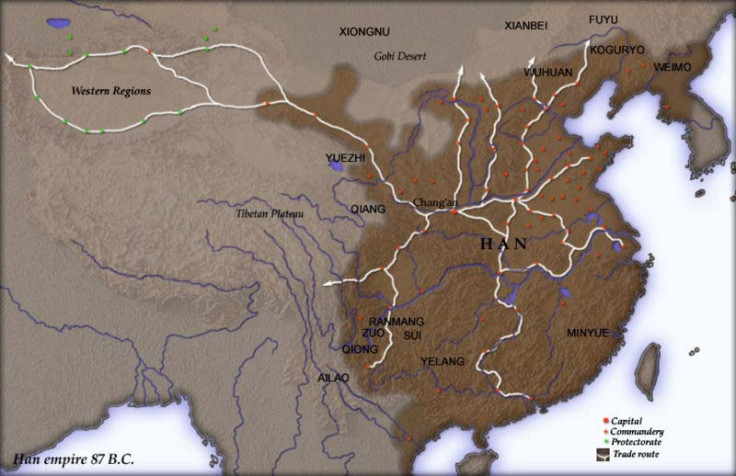China: 2000-year-old smokeless lamps discovered in Han tomb

Chinese archaeologists have discovered 2000-year-old lamps that used water to absorb smoke emitted from burning wax. Found in a cemetery dating to the Western Han Dynasty (221 – 206BC) the two bronze lamps could be the world's earliest "eco-friendly" lamps. Ironically, China currently has one of the worst global air pollution levels.
It is known that bronze lamps were produced in large numbers by the Han Dynasty, but the two smokeless lamps could have been among the rare ones belonging to elite members of society.
"The lamps are both the shape of a goose catching a fish in its mouth. The light is attached to the fish. Smoke emitted during the burning of wax can enter the bird's body via an intake on the fish, travel through its neck and be dissolved by water stored in its hollow belly," Xin Lixiang, who leads the excavation team, told Xinhua news agency.
The brightness of the lamp could be adjusted using swinging shades and it could be dismantled for cleaning. "It is both an artwork and an example of ancient innovation," said Lixiang.
The tomb near Nanchang in Jiangxi province lies in the vast Haihunhou cemetery believed to be the most complete Western Han Dynasty cemetery ever discovered in China, with eight tombs and a burial site for horses.
The main tomb here belongs to Liu He, the grandson of Emperor Wu of the Han Dynasy. Liu He served as emperor in 74BC for just 27 days before he was dethroned for loose morals, according to Ancient Origins. The picture of the lamps is available here.
The site has yielded many artifacts since excavation began in 2011. These include gold, bronze and iron artifacts, wooden tablets, bamboo slips, jade relics, musical instruments and bronze coins.
The discovery, pointing at awareness prevalent 2000 years ago on the harmful effects of smoke, comes at a time when air pollution in China kills about 4,000 people every day, accounting for around 17 of all deaths in the country. Berkeley researchers who used data from the nationwide network of sensors recently painted a more alarming picture of pollution levels in China, than reported using satellite data.
© Copyright IBTimes 2025. All rights reserved.





















